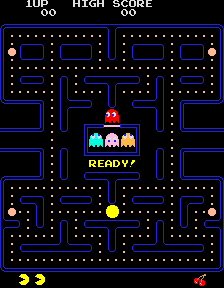UMCOR Hurricane Relief

 Anyone who went to Sunday school as a child knows the story of Abraham being commanded by God to sacrifice his son, Isaac (Genesis 22:1-19). Of course, with Isaac bound to the altar and Abraham with knife in hand, God stops the pious father from sacrificing his son and provides a ram "caught in a thicket" as an alternative offering. Though no one (except the poor ram) dies, later Rabbinic tradition struggled with this text. Why would God ask someone to kill his son as a test of fidelity?
Anyone who went to Sunday school as a child knows the story of Abraham being commanded by God to sacrifice his son, Isaac (Genesis 22:1-19). Of course, with Isaac bound to the altar and Abraham with knife in hand, God stops the pious father from sacrificing his son and provides a ram "caught in a thicket" as an alternative offering. Though no one (except the poor ram) dies, later Rabbinic tradition struggled with this text. Why would God ask someone to kill his son as a test of fidelity?
Jephthah's daughter is not as fortunate as Isaac. She dies nameless; according to the text her death is most significant because she dies an unmarried virgin. Poor girl. Where is her "ram in the thicket"?
Granted, God commands Abraham to sacrifice Isaac, while Jephthah sets his own terms for an offering of thanks to the LORD. (Jephthah possibly assumes that an animal will be the first to meet him in the courtyard of his home upon his return from battle.) Still, why doesn't God make acceptable an alternative sacrifice? For that matter, why doesn't Jephthah cry out, asking to be released from his vow, so that he won't have to kill his daughter?
Judges 11:29-40 is a tricky text and one the church doesn't like to deal with. How do we teach this story to our children and youth? How do we help our adults struggle with this difficult Scripture?
(Painting: "Abraham Sacrificing Isaac" by Laurent de la Hire, 1650; public domain.)
 This week's Christian Dissent Live (on Radio Free Nashville, 98.9 WRFN) is now available for download.
This week's Christian Dissent Live (on Radio Free Nashville, 98.9 WRFN) is now available for download.
 Pacman Jones, the Titan's corner selected sixth overall in this year's draft, has dominated the headlines here in Nashville. He actually did pretty well as a cornerback, but he dropped two punts, one of which was recovered by the Niners.
Pacman Jones, the Titan's corner selected sixth overall in this year's draft, has dominated the headlines here in Nashville. He actually did pretty well as a cornerback, but he dropped two punts, one of which was recovered by the Niners.
 According to popular belief, the hand gesture is meant to emulate devil horns and pay homage to the dark lord, though in recent years many have ignored the sign's supposed satanic connotations and have taken it to simply mean "rock 'n' roll." (The popularity of the gesture surged in the nineties, largely due to the influence of Beavis and Butthead.)
According to popular belief, the hand gesture is meant to emulate devil horns and pay homage to the dark lord, though in recent years many have ignored the sign's supposed satanic connotations and have taken it to simply mean "rock 'n' roll." (The popularity of the gesture surged in the nineties, largely due to the influence of Beavis and Butthead.) Though I make the corna subconsciously, as though it flows from my being, the sign's presumed relation to Satan has always made me nervous. As a divinity school grad, I know that the image of Satan as a red-skinned, two-horned humanoid with a pointy beard is the product of centuries of Christian mythology and that the Bible is not even entirely clear as to who or what Satan is. As far I am concerned, horns in no way signify evil or darkness. Still, as a Christian who doesn't want to offend other Christians, I don't want anyone to look at my hand and think that I am mocking his or her faith or that I am disrespecting God. So, I have found myself adding the thumb, forming the American Sign Language sign for "I love you." This, Dio explains, is incorrect.
Though I make the corna subconsciously, as though it flows from my being, the sign's presumed relation to Satan has always made me nervous. As a divinity school grad, I know that the image of Satan as a red-skinned, two-horned humanoid with a pointy beard is the product of centuries of Christian mythology and that the Bible is not even entirely clear as to who or what Satan is. As far I am concerned, horns in no way signify evil or darkness. Still, as a Christian who doesn't want to offend other Christians, I don't want anyone to look at my hand and think that I am mocking his or her faith or that I am disrespecting God. So, I have found myself adding the thumb, forming the American Sign Language sign for "I love you." This, Dio explains, is incorrect.
 As of this evening, the Tinley family vegetable garden has yielded 50 vegetables:
As of this evening, the Tinley family vegetable garden has yielded 50 vegetables:
 My son Meyer, a skilled percussionist, now owns his own drum set. It's a three-piece (a bass drum and two rack toms) with a splash symbol. He still needs a snare drum, high hat, and bass-drum pedal; and he should probably replace the heads and some of the hardware; but the shells are in good condition.
My son Meyer, a skilled percussionist, now owns his own drum set. It's a three-piece (a bass drum and two rack toms) with a splash symbol. He still needs a snare drum, high hat, and bass-drum pedal; and he should probably replace the heads and some of the hardware; but the shells are in good condition.
 If you were wondering why I went with the tomato, I was just in a tomato mood last night.
If you were wondering why I went with the tomato, I was just in a tomato mood last night.
 The following two paragraphs from the 2000 Book of Discipline were not included in the 2004 Book of Discipline (¶161D):
The following two paragraphs from the 2000 Book of Discipline were not included in the 2004 Book of Discipline (¶161D):
 I finally finished reading last week's Time cover story, "Evolution Wars," about the push to teach intelligent-design theory in school science classes. It's a good article that articulates the difference between traditional creationism and the growing intelligent-design movement. Because I recently addressed this subject, I'll spare you any further commentary on the article.
I finally finished reading last week's Time cover story, "Evolution Wars," about the push to teach intelligent-design theory in school science classes. It's a good article that articulates the difference between traditional creationism and the growing intelligent-design movement. Because I recently addressed this subject, I'll spare you any further commentary on the article.







